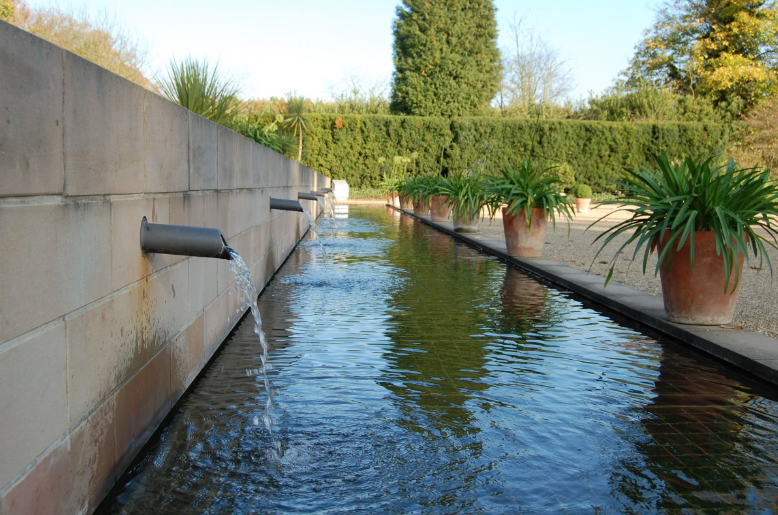While a beautiful landscape may look amazing, there are many landscaping mistakes that can negatively impact your plumbing system. These mistakes can include improper grading and drainage. Poor grading and drainage can cause flooding and damage a home’s foundation. Pipe joints are crucial for proper landscape piping. Pipes should be installed in strategic locations to minimize the risks of damage. In addition, proper pipe joints should be installed and maintained to prevent leaks and flooding.
Pipe joints are crucial parts of landscape piping
There are four basic types of pipe joints: union, pipe end, compression fitting, and flange. Each one connects one pipe to another by creating a joint that is leak-proof and self-restrained. Unions can be either concentric or eccentric in design. The male and female ends of the union are connected by a coupling housing.
Pipe joints are important parts of any piping system. Without them, a pipeline system cannot be seamless. Moreover, joint technique plays a key role in pipeline durability. Several types of materials are used for pipe joints, depending on their type and usage. Some materials, such as stainless steel, are more durable than others.
Improper drainage can cause flooding
When it comes to landscaping, proper drainage is important. Poor drainage can cause problems with standing water. It can be caused by a number of factors, including the type of soil, drainage channel, and grade. Luckily, these problems are often relatively simple to fix. Firstly, you need to make sure that the ground slopes away from your home, especially if your landscaping is flat. You may need to add a layer of topsoil to your landscape to ensure it drains properly.
Improper drainage can also affect the surrounding areas. It can lead to puddles in the lawn, which can erode expensive hardscaping. In addition, it can damage your property’s foundation. The Plumbers Highfields team can help you with the proper drainage implementation on your property.
Plants can cause problems with a home’s foundation
The roots of certain trees and shrubs can damage a home’s foundation. Deep roots, especially those of Norway maples, can cause cracks and leaks in a home’s foundation. Shrubs, on the other hand, can add beauty and texture to a yard, but their shallow roots can also disrupt a home’s foundation.
Plants that grow near the foundation should be watered and regularly checked for overgrown roots. It is important that the soil beneath the tree does not suffer from too much water and does not saturate the ground, causing the structure to sink. Poor drainage is another common cause of foundation failure. Poorly installed gutters and downspouts can cause excess water to pool in the soil, creating an unstable foundation.
In order to prevent foundation problems, avoid planting flowers and trees along the foundation. The roots of these plants can grow up to twice the size of their canopy. This can cause damage to the foundation by eating into the soil and drinking it up. Small ornamental trees are fine, but larger ones shouldn’t be allowed near the foundation. To keep the roots under control, use irrigation lines and root barriers. You can also remove large trees from the foundation.

Improper grading can damage a home’s foundation
Improper grading around a home’s foundation can lead to a wide range of issues. It can cause cracks in the foundation, rot in the walls, and even a leaking basement. It can also affect the plumbing and electrical systems in the home. These problems can be extremely costly to repair.
Improper grading can also affect a home’s plumbing system. While there are many factors that contribute to an improper grading situation, there are some simple guidelines that will help you avoid potential problems. The first is avoiding grading that is too steep. You should aim for a slope that is one or two percent lower than the rest of the property. This will prevent water from accumulating on top of the foundation.
If a home’s soil slopes toward the foundation, grading the property can prevent water from reaching the home’s plumbing system. To find out whether your soil is too steep or too flat, use a leveling stick or a flat object to measure the slope. If it is too steep, backfilling will be necessary. If you’re unsure of the correct grade, make sure to remove any vegetation within a foot of the house and any decorative stones that might act as water-sucking stones.
Improperly installed root barriers
Root barriers should be an integral part of your foundation maintenance program. This foundation care document contains general guidelines for caring for a foundation built on expansive clay soil. A root barrier should be installed at least six inches deep, preferably more. An improperly placed root barrier can cause serious plumbing system problems.
A root barrier protects your foundation from tree roots and prevents them from damaging your home or building. When used correctly, it redirects a tree’s roots away from structures. Improperly installed barriers can cause cracks, buckled sidewalks, and damaged driveways. Trees and shrubs have large roots that spread out in search of moisture. Without a barrier, these roots will eventually penetrate cement structures.
A root barrier can be made of either a solid or permeable material. Both types of root barriers have different characteristics. Some root barriers are permeable, allowing small roots to grow through but blocking the growth of large ones. The best root barrier is one that contains a combination of a solid barrier and a long-lasting chemical that inhibits the growth of roots.
